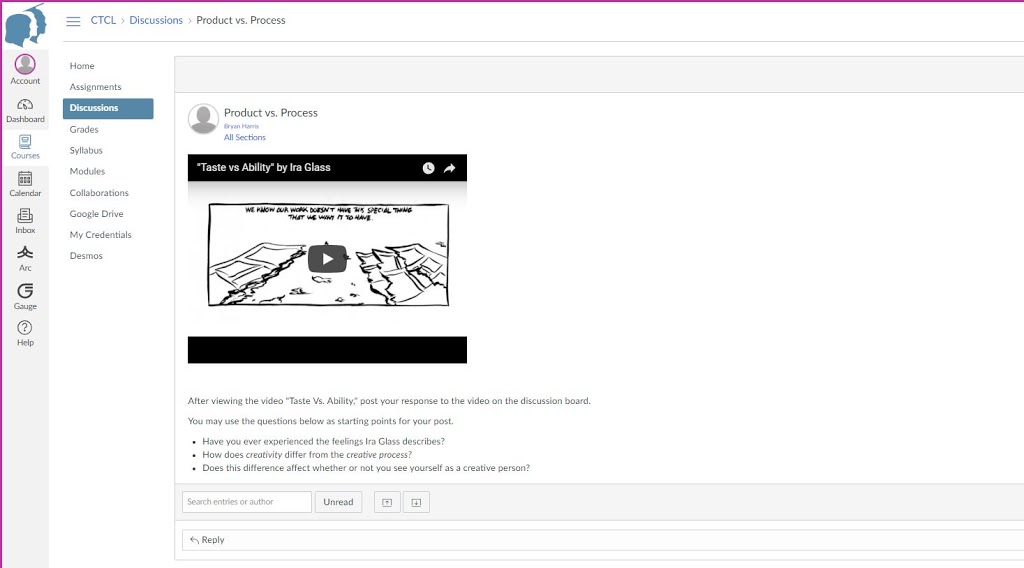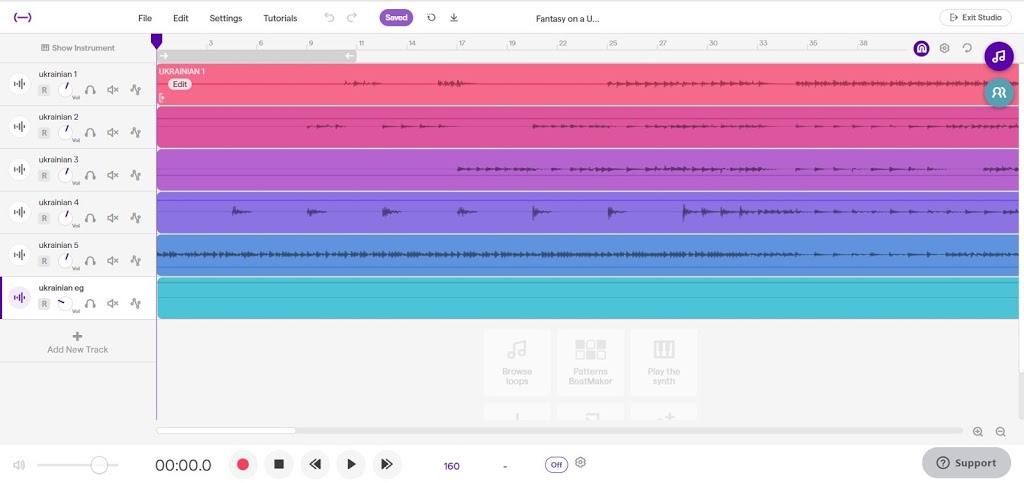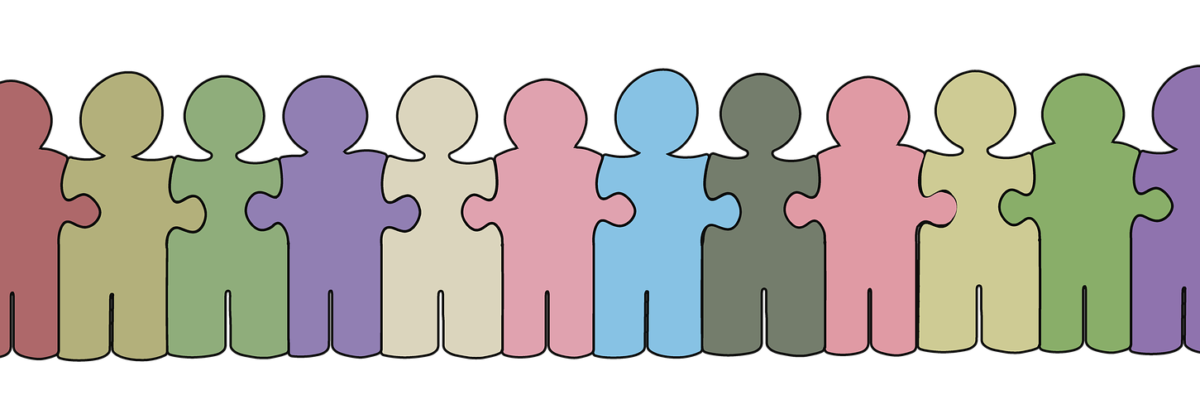Throughout the first half of my DLL master’s program, I have been developing an innovation plan, designed to help teachers use the process of creation, feedback, and revision to develop a growth mindset in themselves and in their students. I’ve previously posted some of the broader goals of the program–big, hairy, audacious ones (Collins, 2018)–through the use of Fink’s 3-column table (2003). Those can be found here. On this page, I present a more detailed explanation of the plan and how it will be implemented.
The plan itself is for a professional development program that lasts for an entire school year (either fall-to-fall or spring-to-spring) and that embraces Gulamhussein’s 5 principles of effective professional development (2013):
- PD must be ongoing and of significant duration
- Teachers must receive coaching and support during implementation
- PD must incorporate active learning – “go and show” as opposed to “sit and get”
- PD should incorporate modeling of effective instruction
- PD should be content-specific, not generic
Teachers in the program will begin by exploring the creative process (creation, feedback, revision, repeat as necessary, publish) through the use of digital audio workstation (DAW) software. Teachers will create and revise their own audio projects, while also developing ways to utilize this same revision process in their own classrooms (with or without the use of DAW skills). With the observation and assistance of the program leader and other learners in their cohort, teachers will translate their own experiences with the creative process into experiences for their students. Later phases of the program will involve teachers providing coaching to teachers in earlier phases–teachers who began in the fall will coach teachers who begin the program the following spring, and vice-versa; teachers who complete the program may even elect to lead cohorts themselves afterward.
Here is the timeline of my plan, with links to more detailed descriptions of the various phases and units. This timeline is meant to clearly illustrate the active and collaborative framework of the plan–learners in the later phases of the program provide coaching and support to learners in earlier phases.
Phase 0: Pre-Launch
Before any actual professional learning can begin in this program, I need to a) obtain the approval for awarding PD credit to teachers from the Office of Professional Development in my district, b) obtain the support of my building administration to pilot the program in my own school, and c) recruit teachers for the pilot cohort, projected to begin in August of 2019. Those items don’t necessarily have to happen in that order; item (c) may help convince building and district administrators that there is sufficient interest in the program to carry out (a) and (b), accomplishing item (b) may help carry weight with item (a), etc.
This Call to Action video is aimed directly at administrators and teachers in my district, pointing out that the same techniques and best practices we already use to teach our students should also be used to teach our teachers, and that we have the resources to do just that, by having teachers share their expertise and experience with each other.
The goal for the pilot cohort is to have one teacher from each of the academic departments in my school (including administration and counseling) take part in the program. This will provide a cohort of 10 students with the widest possible range of content areas. Support from administration and from department heads will help facilitate this goal, as will active recruiting of teachers in the building who qualify as influencers (Grenny, Maxfield, McMillan, Patterson, & Switzler, 2013). This cross-section of academic disciplines and social and professional leadership qualities among cohort members will be vital in all the remaining phases of the program.
Phase 1: Creative Learning
At its most basic, my professional learning plan is aimed at helping teachers develop a growth mindset, in themselves and in their students. I believe this is the first step toward creating a community of learners who embrace all challenges as opportunities, and are able to solve those challenges through creativity, collaboration, and effort. As illustrated on my timeline, the first three units of my PL program focus on developing this mindset, via an exploration of creating and revising personally significant works–in this case audio projects.
Teachers participating in this PL program will complete class activities through the Canvas LMS–a screenshot of a sample module from the course is below. The course is designed to be asynchronous, allowing learners much-needed flexibility with their schedules.

The first unit focuses on differentiating the act of creation from the creative process. The former is what many people think of as creativity: inventing something out of nothing. This line of thinking tends to treat creativity as an “either you have it or you don’t” proposition–Carol Dweck (2016) would likely say that such thinking reflects a fixed mindset about individual creativity.
What this idea misses, however, is that the initial flash of creation is only the beginning of a process, and that any creative idea, no matter how brilliant, needs to shaped and polished before it becomes something more lasting than a brief instant of inspiration. This process can be learned, and can transform even less-than-brilliant initial ideas into something much greater. It requires more effort than inspiration, though, and it is here that Dweck’s notion of the growth mindset comes into play.
The second and third units of my plan (running concurrently) illustrate and develop this growth mindset by taking teachers (learners) through the use of DAW software to create meaningful works. In the second unit, learners study the basics of digital audio production through the web-based DAW Soundtrap, and use these skills to create a small portfolio of audio projects.

Learners are given parameters on these projects in order to ensure that they demonstrate mastery of the necessary skills, but the projects are also designed to give the learners a great deal of control over the projects, and to make certain that learners are creating works that are meaningful to them. Projects include learners creating audio works that they can use in their own classrooms in a variety of ways, remixing and repurposing existing audio to adapt it to their own needs, and creating audio self-portraits, using the learners’ acquired audio production skills to illustrate their own stories and personalities.
As learners are creating these personally significant works, they are also becoming acquainted with the process of revising them (the third unit of my PL plan). Each audio project will be put through a process of feedback and revision (often more than once) before being published in its final form. Learners will experience the revision process both as givers and receivers of feedback, and, through class discussion and personal reflection, will learn how this process embodies the growth mindset by treating criticism and challenges as opportunities for improvement and personal reward, rather than obstacles to be avoided.
Phase 2: Implementation
Phase 1 is simply the creative groundwork for the real work of my professional learning plan (indeed, Phase 4 will illustrate that the units of Phase 1 can incorporate completely different creative content and still serve the purpose of the larger plan). It is Phase 2 that truly engages Gulamhussein’s 5 principles of effective professional development.
Learners have already been following Gulamhussein’s first and third principles: the professional learning has been ongoing and of significant duration (approximately 7 weeks at this point, with much more to come), and learners have been engaged in active learning (creating and revising artistic works with personal significance and real-world application). In Phase 2, Gulamhussein’s second and fifth principles, ongoing support for teachers during the implementation of change and content that is specific rather than generic, will get greater attention; the fourth principle, modeling of new practices will receive some focus as well, although this will become more prominent in Phase 3.
The first unit of Phase 2 involves a great deal of learner collaboration. As mentioned earlier, the cohort will be comprised of teachers from a wide cross-section of academic areas. Some of these areas will readily lend themselves to the use of creative works: fine arts or English, for example. Other disciplines may have fewer obvious opportunities: algebra or biology might not readily present creative avenues. Through class discussion and brainstorming, individual learners will develop plans for incorporating the principles of the growth mindset and the process of creation, feedback, and revision into their own content areas. This process will necessarily look different for each cohort that experiences the program; this is discipline-specific content at its best, determined by the learners themselves, who are the true content-area specialists. As they develop and revise these implementation plans, learners will be experiencing the Phase 1 ideas of the creative process in a new but related environment: both music-making and teaching are prime examples of creative endeavors.
The next unit is the crux of Phase 2, and indeed one of two units that form the heart of this professional learning plan. During this unit, learners will implement the plans they developed in the previous unit and will take part in a series of 8 scheduled observation and coaching sessions–5 as the subject, 3 as the observer. By taking on both roles in the observation process, learners will receive the benefits of coaching from the cohort leader and from colleagues, and will gain experience providing that same coaching (important both in Phase 3 of this PL plan and with their own students).
While variations in content area, implementation plans, and participants’ schedules may make it necessary to alter this observation schedule somewhat, a possible observation sequence would look something like this:
- Observation 1 (by cohort leader)
- Observation 2 (by cohort leader)
- Observation of Cohort Leader
- Observation 3 (by cohort leader)
- Observation of Cohort Leader or Classmate
- Observation 4 (by cohort leader or classmate)
- Observation of Classmate
- Observation 5 (by classmate)
Learners will take part in brief pre-observation discussions and more detailed post-observation conferences; these may be conducted face-to-face, electronically, or a combination of the two, depending on the participants’ scheduling needs. At the end of the observation unit, learners will reflect on the implementation of their plans and the role the observation and feedback process played in it.
Phase 3: Extension
While Gulamhussein’s fourth principle–modeling–came into play during the observation section of Phase 2, it receives additional attention during the first unit of Phase 3. At this stage of the PL program, participants have spent a full semester engaged in the program and have in some way experienced all of the activities involved (the remainder of the program involves learners experiencing prior activities in new ways and in different roles). This is the ideal moment for learners to provide feedback to the cohort leader on ways to improve the PL program for future cohorts. It is also the perfect opportunity for the cohort leader to model the process of receiving feedback and using it to revise the course, providing an example of the growth mindset the program is meant to develop.
The final unit of Phase 3 (and, for some participants, the final unit of the PL program) involves experiencing the observation activities of Phase 2 from a new perspective. As the current cohort of learners was beginning the observation portion of Phase 2, a new cohort was starting Phase 1 of the PL program–the beginning of their Phase 2 coincides with the current cohort’s Phase 3 (see the PL Timeline for a visual representation of this). Members of the current cohort will be paired with new cohort members and will serve as mentors and coaches during the new cohort’s Phase 2 observation process:
- Observation 1 (by cohort leader or mentor)
- Observation 2 (by cohort leader or mentor)
- Observation of Cohort Leader/Mentor
- Observation 3 (by cohort leader or mentor)
- Observation of Cohort Leader/Mentor or Classmate
- Observation 4 (by cohort leader/mentor or classmate)
- Observation of Classmate
- Observation 5 (by classmate)
As with the pilot cohort, there is flexibility in the observation sequence. The intention is that both the cohort leader and the assigned mentor will carry out observations. This expanded pool of observers has several benefits: more experienced PL participants get to practice and refine their feedback/coaching skills (that they will also use with their own students), and observe more ways of implementing the concepts of the program; newer cohort members get feedback from a wider variety of sources; the observation responsibilities of the cohort leader are reduced from what they were in the pilot cohort, when there was no pool of mentors to draw from. This observation sequence concludes with mentors reflecting on their experiences providing coaching to less experienced learners, and on how that new perspective on the observation process affected their understanding of the program concepts and goals.
Phase 4: Leadership (optional)
Teachers who wish to continue their PL efforts will be encouraged to take the final step: leading a cohort themselves. This, of course, will involve taking on all the responsibilities of the cohort leader, but perhaps more importantly, it will involve adapting Phase 1 to incorporate different creative content. As mentioned earlier, Phase 1 is in many ways simply a means to an end, laying the creative groundwork for an exploration of the creative process. Indeed, I anticipate that future cohort leaders will adapt the creative process implementation plans that they developed during their own PL experience for use in their own cohorts. In this way, I hope to influence educators in all academic areas to take part in this program–some teachers may be more comfortable with a cohort leader from their own content area, and thus may be more willing to try the program. This is the program’s true goal, after all: to spread the creative process and the growth mindset into all disciplines and all classrooms, using the expertise of teachers who have experienced them.
REFERENCES
Collins, J. (2018). BHAG–Big Hairy Audacious Goal [Blog post]. Retrieved from https://www.jimcollins.com/article_topics/articles/BHAG.html
Dweck, C. S. (2016). Mindset: The new psychology of success. New York, NY: Ballantine Books.
Fink, L. D. (2003). A self-directed guide to designing courses for significant learning. Retrieved from https://www.deefinkandassociates.com/GuidetoCourseDesignAug05.pdf
Grenny, J., Maxfield, D., McMillan, R., Patterson, K., & Switzler, A. (2013). Influencer: The new science of leading change (2nd ed.). New York, NY: McGraw Hill.
Gulamhussein, A. (2013). Teaching the teachers: Effective professional development in an era of high stakes accountability. Center for Public Education. Retrieved from http://www.centerforpubliceducation.org/system/files/2013-176_ProfessionalDevelopment.pdf



